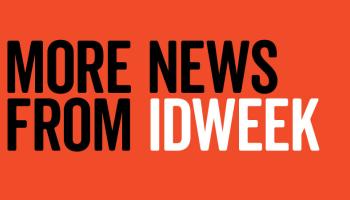

These reports are but snapshots of findings presented at IDWeek, held October 26–30, 2016, in New Orleans.
Search for research abstracts and poster presentations from IDWeek at idsa.confex.com/idsa/2016/webprogram/meeting2016-10-27.html.
“Anal cancer is a common cancer among HIV-infected men who have sex with men (MSM), and studies have suggested an increasing incidence in this population,” reported Mark Freedman, DVM, MPH, and colleagues. “To date, there are no national guidelines recommending anal cancer screening and no population-based estimates of screening rates among HIV-infected MSM.”
Researchers found that, “Between 2009 and 2012, only 11% of HIV-infected MSM in care were screened for anal cancer, and significant disparities in screening by various characteristics were observed.” The group noted that there are no federal guidelines for anal cancer screening in HIV-positive men. Information for this report came from the Medical Monitoring Project (MMP). They hope it can be used to guide decisions and screening, noting that guidelines for cervical cancer screening have reduced the rates of death and illness in women living with HIV.
Online intervention was more likely to keep HIV-positive gay men in care, on treatment, and virally suppressed, a research team discovered.
Richard Teran, MPH, and colleagues at the Columbia University Mailman School of Public Health reported in their poster presentation, “Recruiting men online provides an additional avenue for researchers and clinicians to (1) study HIV-positive MSM sexual behavior by reaching thousands of HIV-positive men, (2) identify men disengaged from HIV-related care, and (3) implement behavioral interventions to improve HIV-related care and outcomes.”
They also concluded that, “Similar to CDC’s estimates, our analysis identified younger and ethnic/racial minority MSM to be less likely to achieve viral suppression.”
PrEP (pre-exposure prophylaxis) still faces an uphill challenge among some health care providers. An anonymous survey of health care providers at the University of Maryland School of Medicine looked at experience, knowledge, and attitude towards HIV prevention with the use of medicine. Despite general comfortableness with the biomedical prevention strategies, 15% of respondents (7 out of 47) said that PrEP should not be discussed with people requesting an HIV test.
Sarah Schmalzle, MD, and colleagues reported that requests for nPEP (non-occupational post-exposure prophylaxis) and PrEP happened rarely or never among the providers taking the survey. Providers had little awareness of patient assistance programs (for financial help) and noted barriers, “but most did think that both nPEP and PrEP were feasible and could be provided quickly.”
The poster, packed with information, is available online.
Although the CDC recommends pre-exposure prophylaxis (PrEP) for those at high risk for HIV, few primary care providers (PCPs) are willing to prescribe it, reported Natalie Mariam Salas, MD, and colleagues in a poster.
“We discovered a lack of awareness of PrEP among PCPs in a metropolitan area in New Mexico. However, providers previously uncomfortable with prescribing PrEP became willing to do so after our educational intervention.”
Heather Farthing, BS, and colleagues from the University of Miami Miller School of Medicine and Jackson Memorial Hospital (in Miami) reported that of 71 HIV-positive patients surveyed (83.1% heterosexual, 80.3% African American, and 22.5% Latino), many said they had sex in the past year with someone who was HIV-negative or had unknown status. Of these 40.8% of survey respondents, 17.2% said they “never” disclose their HIV status to sexual partners.
“Frequency of and comfort with discussions about HIV/AIDS and sex with friends, family, and partners may impact PrEP awareness and should be considered when devising strategies to offer PrEP to discordant partners,” the team reported in its conclusion.
An emergency syringe exchange program (SEP) established during an HIV outbreak in Indiana in 2015 reduced risks for transmitting the virus.
“Among clients enrolled during the first two months of an emergency SEP, many injection-related risk behaviors declined significantly,” reported Monita R. Patel, PhD, MPH, and colleagues from the CDC. “Emergency SEPs can rapidly reduce risk behaviors capable of transmitting HIV in an outbreak setting.”
Back in 2011, Indiana experienced an increase in acute (new) hepatitis C virus (HCV) infections among people with “a history of illegal drug use.” The Indiana State Department of Health (INDH) decided to evaluate the use of a test called pooled NAAT (nucleic acid amplification test) that finds early-acute HCV cases. Cases found were later confirmed when the patients seroconverted, which showed the efficacy and benefit of this testing strategy.
The pilot program was discontinued in 2013 due to time and money constraints, but re-instituted during the 2015 HIV outbreak.
INDH found six cases that were NAAT-positive that had tested negative using the traditional HCV antibody test).
This number represented 2.11% of the antibody negative tests, but that was a higher detection rate than was found during the 2013 statewide pilot program (0.1%).
“These data demonstrate the efficacy of pooled NAAT testing for the detection of acute HCV infection in a high risk population,” INDH reported. “In the future, acute-HCV screening through pooled NAAT may be seen as a useful barometer for the assessment of injection drug usage and risk of HIV acquisition throughout Indiana.”
—Enid Vázquez

